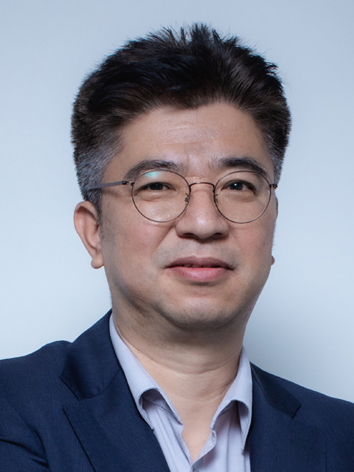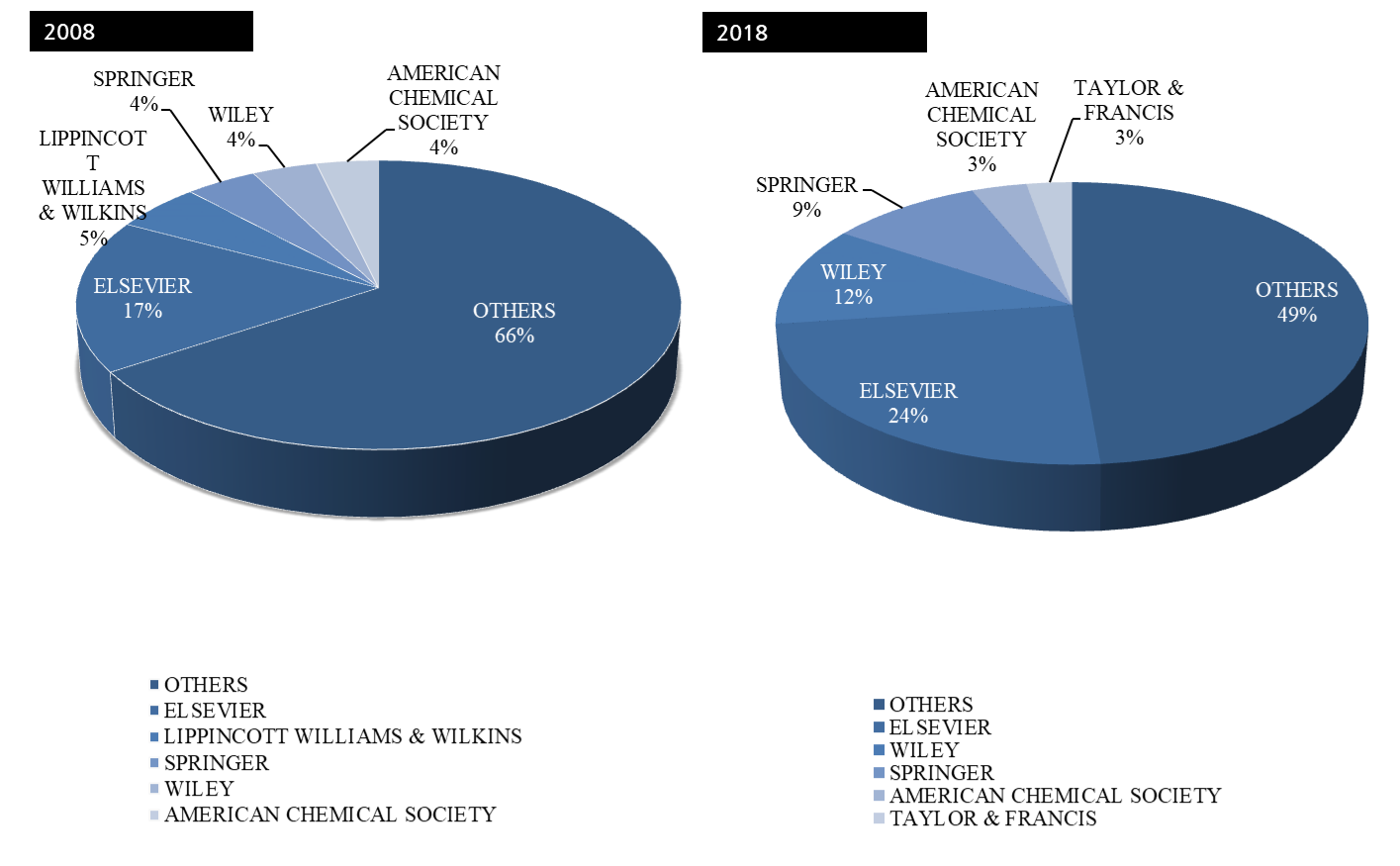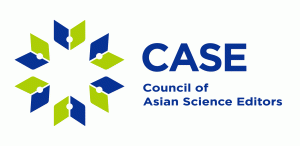How will South Korean publishers survive 10 years from now?

Younsang Cho | M2PI
A conference commemorating the 10th anniversary of the establishment of the Korean Council of Science Editors (KCSE) was held online on September 10, 2021 with the theme “Projecting academic publication trends ten years from now.” This theme was chosen to convey the message that academic publishing in South Korea has made great progress and its prospects will be even more promising in 10 years’ time.
Through a retrospective overview of the decade that has passed since the establishment of the KCSE, this article aims to predict how the position of academic publishers will change in the journal publication market, and how South Korean publishers can prepare for the changes anticipated in the next 10 years with 2021 as the starting point.
There have been two major changes in the South Korean publishing market over the past decade, particularly in the scientific journals sector. The first is the shift from offline publishing (analog) to online publishing (digital), and the second is the widespread implementation of open access content.
According to the annual report, titled “Analysis on the Research Achievements in Science and Technology,” which was released by the Ministry of Science and ICT/ Korea Institute of Science & Technology Evaluation and Planning (KISTEP), South Korea was ranked 12th in terms of the number of published research articles worldwide; 69,618 research articles were registered in the Science Citation Index (SCIE) in 2019 [1]. A notable feature of academic publishing in South Korea is that journal publications have primarily been led by academic societies rather than large publishers. South Korean publishers should also devote themselves to continuing their efforts and overcoming challenges to keep up with the services offered by large international publishers.
With the accelerating digitization of academic journal publications, publishers have accelerated their global investments into technological developments using their enormous financial resources. According to the 2018 Global Publishing Industry, the market share of the top five publishers increased from 34% in 2008 to 51% in 2018, indicating a 50% increase over the last 10 years (Figure 1) [2].

Figure 1. Share of the top five publishers based on the number of articles
In this context, it is noteworthy that many journals are published in Korea, and most South Korean academic journals are not published through large overseas publishers; however, they rank among the top journals internationally. This is because academic societies play a leading role as publishers of academic journals, while Korean publishers play a key role in raising the quality of academic journals by taking initiatives that can compete with large publishers in line with editors’ expectations.
Although Korean publishers are late starters, their current achievements could be credited to their relentless efforts to gain the knowledge and technological expertise necessary for the digital revolution in publishing. In the future, Korean technology will gradually develop in line with the digital revolution, and accordingly, the new open science movement, artificial intelligence’s (AI) use of big data, and the metaverse (a three-dimensional virtual world) will spearhead these changes in the journal publication market.
First, the COVID-19 pandemic has provided an opportunity for open science to be disseminated more vigorously. Many researchers obtain feedback on articles related to COVID-19 through open access, and they strive to help the world overcome COVID-19 by making their research outcomes available to many people in a short period of time. In response to this movement, commercial publishers have also provided complementary research articles related to COVID-19 (open access), opening data free of charge for reuse (open data), and actively supporting collaborative research (open collaboration). As such, open science has been restoring the public nature of scientific research by disseminating publications and research data, and concurrently igniting stakeholders’ imagination regarding novel perspectives for the utilization of science and technology through free access and by sharing research processes and outcomes.
With the development of open science, open peer reviews will be gradually implemented in the publication process of academic journals. This practice will promote the advancement of academic journals by enhancing the transparency of the review process compared to conventional peer review, as well as by increasing the credibility of review results. Because the application of open peer review requires changes in the publication process of journals, Korean publishers ought to be prepared for this new publication system by meticulously examining the publication system and the open peer review system of F1000 Research (https://f1000research.com).
Second, AI saves time for authors and editors and enables the rapid handling of manuscripts. Through big data, AI technology in journal publications has already been implemented in the real world. For example, checking for plagiarism in submitted manuscripts, verifying bibliographies, and checking for typos in English are already being put into practice. However, the implementation of AI technology using big data may be challenging given the size of Korean publishers, and it will require funding for R&D and human resources for research, as AI technology may otherwise be practically infeasible because of the small size of most Korean publishers. Despite these circumstances, even without big data, a small volume of data retained by publishers will be applied to select appropriate reviewers and verify bibliographies. Since other components of the publication process that have previously not been automated will be replaced by AI systems in the near future (e.g., the plagiarism detection system currently in use), we need to keep investing in AI applications.
Third, the metaverse is a compound word of “meta,” referring to abstraction and self-reference, and “universe,” meaning the real world. It refers to an online virtual world that incorporates social, economic, and cultural activities involving peoples’ avatars. In fact, the journal publication market will shift from being journal-centered to being a reader-centered arena as spaces are created for active discussion. For example, one possibility would be to hold retrospective virtual meetings for each published article, in which readers can participate through their avatars. Furthermore, permission to use pictures or tables could be purchased using non-fungible tokens (NFTs).
This article has reviewed what Korean publishers should prepare for in the academic journal publishing market over the next 10 years: new publishing services reflecting the widespread implementation of open science, the application of AI using big data, and the application of metaverse services in academic journals during the non-contact era of COVID-19.
As previously mentioned, because the market share of the top five international publishers has grown by 50% or more over the past decade, the reality of Korean publishers may appear inauspicious. Nevertheless, the remarkable growth in their influence over the past 10 years shows the possibility of continued expansion in the future. Korean publishers should, therefore, be able to provide the same publishing services as other international publishers, departing from their typical scope of tasks. In this respect, it is necessary to expand or integrate tasks and convert them into a one-stop service to meet editors’ expectations. In addition to publishing journals, professional consulting, active marketing and publicity, and nurturing of professional editors should be implemented to ensure the survival of Korean publishers over the next decade.
Although we cannot predict exactly what will happen in the next 10 years, scientific advancement cannot be achieved instantaneously; as scientific advancement progresses, we will have sufficient time for adaptation. If we strive to prepare for and nurture the advancement of technology, our current concerns may not be as grave as imagined herein.
References
1. Korea Institute of Science & Technology Evaluation and Planning. Analysis on the Research Achievements Interface Science and Technology (2005–2019) [Internet]. Available from: https://kistep.re.kr/board.es?mid=a10305080000&bid=0002&act=view&list_no=25243&tag=&nPage=4.
2. International Publishers Association and World Intellectual Property Organization. The Global Publishing Industry in 2018 [Internet]. 2020. Available from: https://www.wipo.int/edocs/pubdocs/en/wipo_pub_1064_2019.pdf.
